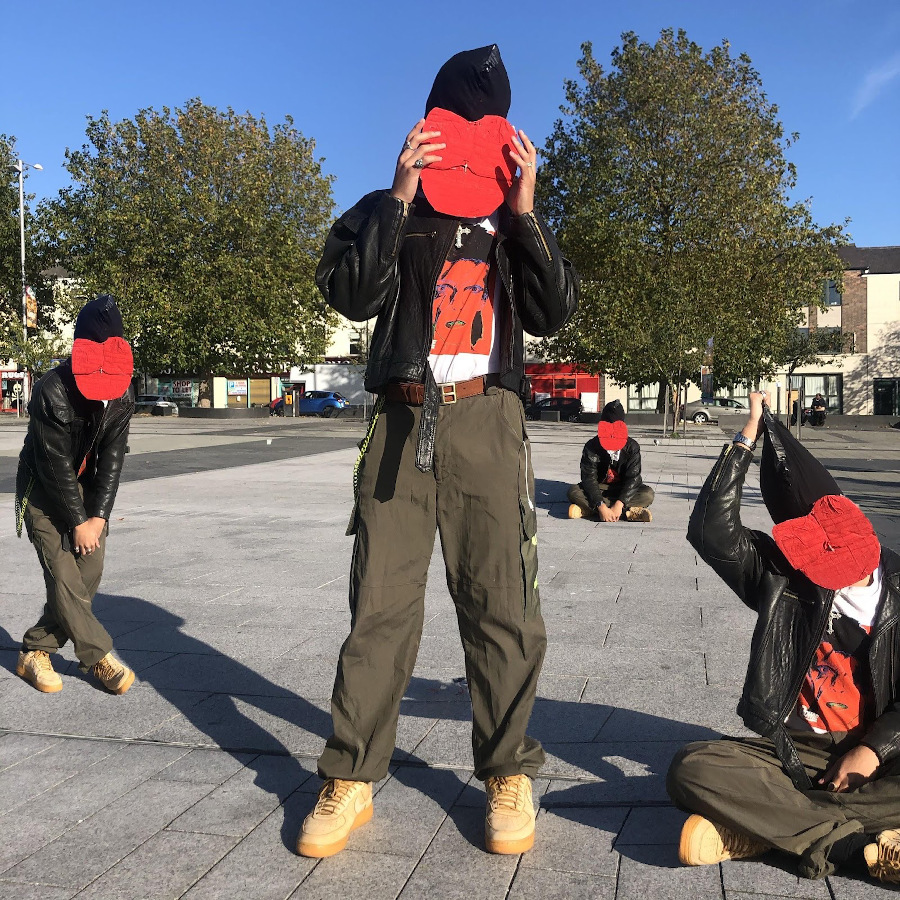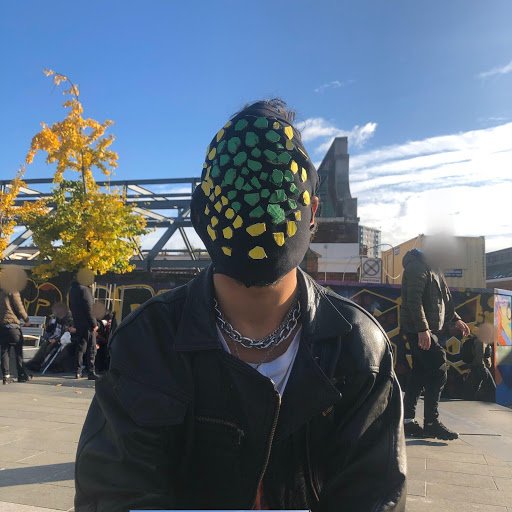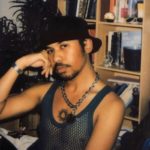
Remember When You Asked Me
Remember when you asked me
in the narrow throat
of a smoking area
whether i identified as queer
and i looked at you both
as questions
as if to ask you
the answer
to myself
*
Nik Wallenda crossed Niagara Falls on a tightrope
tracing each careful foot
after the next
like tired butterflies treading the air
over wet leaves
on arrival Wallenda was greeted by Canadian officials
asking to present his passport
*
Everyday i wake up
to a feeling of
[ ]
and a hard cock
There is a God of Distractions and a God of Cruel Intentions and i don’t know which of them
shakes me awake every morning
*
Recently i have found my new safety
and myself
bottled
gemstones painted on my hand
My students still see me
Mr Andrews
but what is my queerness
but tracing a careful foot
after the next
into the world
and begging strangers to ask me
what i have to present

About
This collaboration came about through personal conversations on queerness between the two artists and the different intersections they have to exist in as individuals. T’kya Taylor, a black queer man and fashion designer lives an experience of trying to find his place and expression in a complicated Venn-diagram of blackness, queerness and class. Joe Andrews, a white, AMAB, non-binary person has to draw their own daily lines between safety and gender expression, while working in the binary-gendered dynamic of contemporary education.
Masc-in-tape is a reactionary piece: As a black queer man I often find myself hiding parts of my identity to fit more securely into queer culture and its inherent expectations of me. It presents me with a system that both fetishises certain features of my blackness while also rejecting the parts of me that do not fit nicely into the constructed systems of white queerness. The mask itself is a hyperexpression of tradionally fetishised aesthetics, while hiding my ‘less desired’ features and obstructing my vision, and hence my agency as a publicly black queer man.
Jamaican Margiela is after the notorious SS ‘91 collection of Belgium designer Martin Margiela. Margiela’s opulent, jeweled masks were designed practically, with the intention of hiding the models faces as he couldn’t afford to pay them. This luxurious anonymity felt like a glamorized reflection of my own experience, growing up in a poor, working class household and having to DIY all of my own clothing – whether that was spray painting chains or painting repurposed jeans with acrylic paint. This reimaging takes the original, material opulence of ‘91 and inverts it, replacing the threaded, white diamonds with PVA-glued cardboard gems in the colours of Jamaica’s flag. Contrary to Masc-in-tape’s self-blinding aesthetic, there is a sense of self-love in adorning Jamaican Margiela, a mask that doesn’t completely hide my features and allows them to peak out in a form of celebration.
What resonated most through our conversations of queerness and fashion, was the lack of a true separation of the two. Being queer and presenting ourself everyday gives us little choice within the structures of fashion. Living as queer and performing fashion, makes any of our actions inherently queer.

T’kya Taylor is a 19 year old Afro-Caribbean and English artist, fashion student, and the textbook Leo of the 1525 collective at the Nottingham Contemporary. His work is a reflection of his own personal experiences and issues in today’s climate. You may find his art on Instagram @fromtkya, where he uses the platform to share his own art, but also celebrates under-represented people, such as young designers and photographers, on his story.

Joe Andrews (They/Them) is a Nottingham based poet, maths teacher, and absolute snack. Their work mainly explores their relationship with gender and family, and has been featured in Homology Lit, Aesthetic Apostle, and in Bad Betty’s Alter Egos Anthology. You may find them on twitter @BigOofAndrews.

 BACK TO ISSUE
BACK TO ISSUE